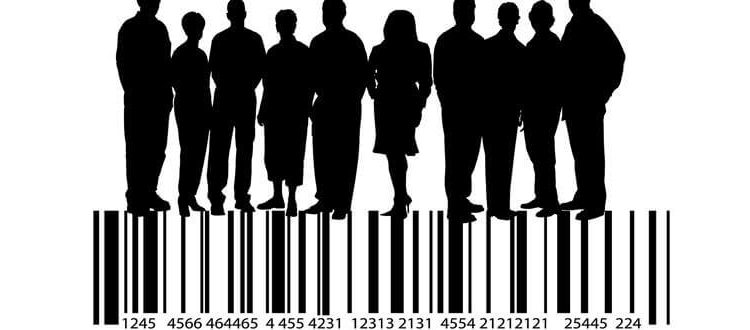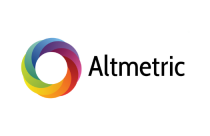ISBN, DOI, ISSN: A Quick Guide to Publication Identifiers

Publication identifiers help in finding information on an article or publication using a set of codes. All of us have names and other identifying characteristics and titles; however, these could be common to several thousands of people. In the United States, a person’s unique identifying tag is his or her Social Security number. The same is true of titles of articles, subject matter, and a host of other characteristics of the written word. A publication identifier is unique to that journal, article, or book.
There are several types of publication identifiers. Some of these are discussed here.
International Standard Book Number
- The International Standard Book Number (ISBN) is for books. ISBNs identify printed or digital books and are used as inventory-tracking devices.
- The code is usually found on the back cover of a book and includes a barcode. One shortcoming of the ISBN is that it does not provide information on all versions of a particular book because each has its own unique code, which might not be an issue since it is recognizable.
- The ISBN has 13 digits and contains five types of identifying information or “elements” such as: a prefix, registration group (e.g., individual country or territory), registrant, publication, and “checksum” (i.e., a figure that is used to detect errors).
- If you are a self-publishing author in the United States, you can easily retrieve your own ISBN through Bowker, the country’s official ISBN source.
- If not, you can find this information on ISBNs in your country from the International ISBN Agency. By purchasing an ISBN for your publication, you ensure a better chance of it being found in a search.
Related: Need instant updates on academic writing on your cell phone? Download the FREE Enago Academy mobile app now.
Digital Object Identifier
- A Digital Object Identifier (DOI) is used mainly in scientific journals.
- Each article in each of the thousands of journals has its own unique DOI. Understanding a DOI is important when doing specific research.
- The DOI format is usually numerals and letters, including some punctuation. For example, a DOI created by Wiley might look like “10.1111/j.1365-2575.2012.00413.x.”
- The first number identifies Wiley, the “j” indicates a journal article, and the number range indicates the ISSN. These are followed by the year the article was received by the publisher and the tracking number.
International Standard Serial Number
- The International Standard Serial Number (ISSN) comprises of seven digits followed by a “check digit” to identify any errors in citations.
- ISSNs help to identify serial publications, which are those that are published regularly in sequence, such as magazines, journals, newspapers, and databases. They don’t identify content or certify its validity.
- Although ISSNs do not identify the journal owner, if a journal name changes, a new ISSN is necessary. This is important when considering a title change because the change will affect cataloging and indexing.
- ISSNs also have some limitations. There might be an ISSN for printed text and a different one for electronic versions.
- “E-journals” are becoming quite popular given the Internet capabilities. Publishers are finding it much less costly to publish their serials online, and many do so exclusively. In addition, many of these journals are open access publications, which allow researchers to more easily gather needed information.
- The ISSN format is “ISSN 0000-0000,” which is printed on the journal cover. For electronic versions, “e-ISSN” is posted on the home page and is included in the DOI.
PubMed Indexing and Referencing Numbers
- The PubMed Indexing Number (PMID) is used for articles in the PubMed database, which contains more than 27 million citations from several sources.
- PMIDs are unique identifiers and are assigned to each record in the PubMed system. The code is found at the end of a PubMed citation and below the article’s author list and title.
- The PubMed Central referencing number (PMCID) is required for listing in the National Institutes of Health (NIH) grant proposals and reports.
- PMCIDs are assigned to an article in PubMed Central, which differs from the PubMed database. These articles comply with NIH’s Public Access Policy. PMCIDs are listed below the abstract.
Serial Item and Contribution Identifier
- The Serial Item and Contribution Identifier (SICI) identifies specific parts of a serial, such as volume number.
- It provides more information to those involved in indexing titles and content. SICI was created by the Serials Industry Systems Advisory Committee (SISAC) to be an extension of ISSN to help identify specifics of an article. The code has become widely accepted and used by both publishers and researchers.
- It comprises of the following three segments:
- Item: The ISSN.
- Contribution: Signifies the page numbers, title code.
- Control: Type of SICI, part of article referenced (e.g., abstract), how content is presented (e.g., text), and version.
For example, “0095-4403(199502/03)21:3<12:WATIIB>2.0.TX;2-J” is SICI for “Bjorner, Susanne. “Who Are These Independent Information Brokers?” Bulletin of the American Society for Information Science, Feb–Mar. 1995, Vol. 21, no. 3, page 12.”
CODEN
- A CODEN is a six-character, alphanumeric code for both serial and non-serial science publications.
- CODEN was designed and published in 1953 by a researcher at the Chronic Disease Research Institute to help him remember his reference publications, but became popular with scientists of all disciplines and is used for bibliographic indexing.
- Usually, CODEN is for articles related to chemistry; however, publishers of non-chemistry articles can request a CODEN from the International CODEN Service.
- Serial publications have a six-letter CODEN. The first four letters represent the journal title, and the fifth and sixth letters refer to one of the first six letters of the alphabet and the check character, respectively.
- For non-serial publications, the first two characters of the CODEN are numbers followed by letters. The fifth character is taken from the entire alphabet, and the sixth is the check character.
In addition, as a researcher, you should recognize these various codes to make your searches less time-consuming. The links here will provide more identifying codes that you might also want to use; however, those listed here are the most common and universally used.









